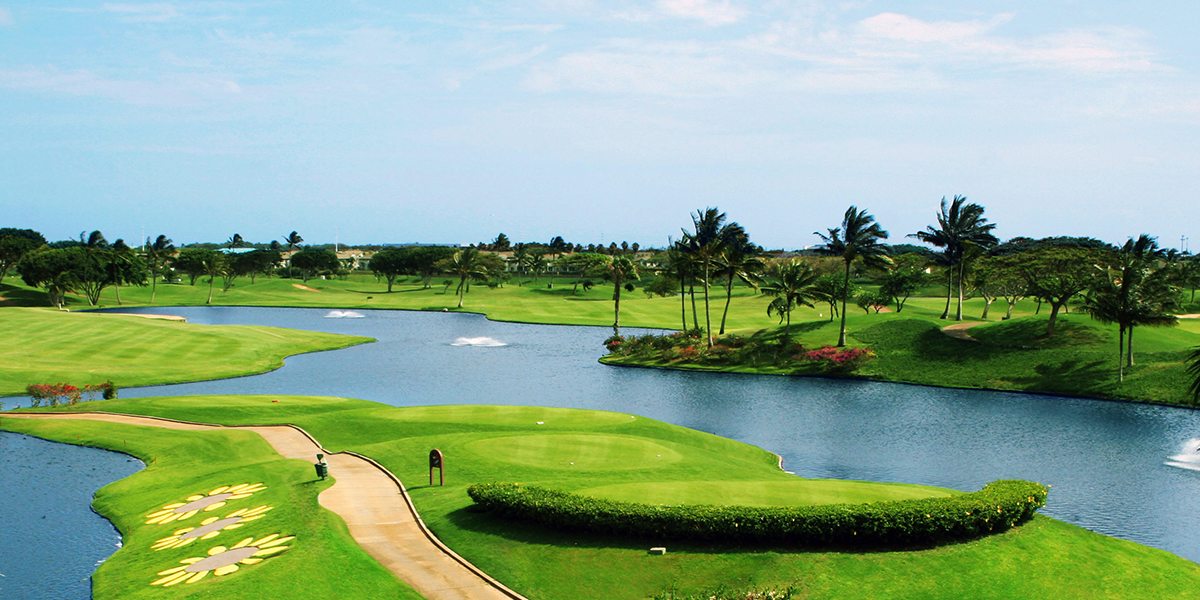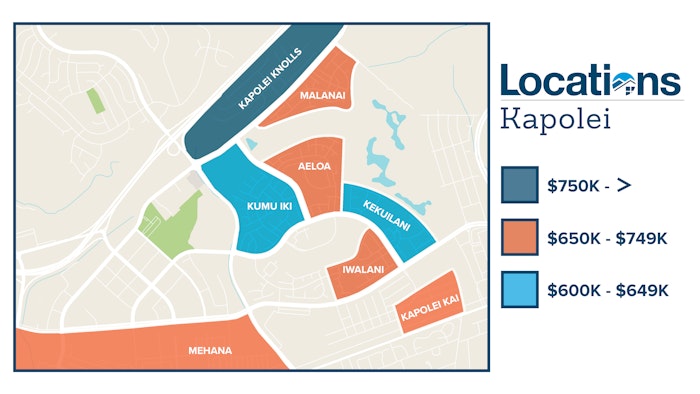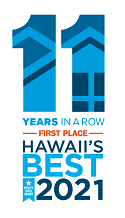
Whether you're a "townie" or a long-time West Oahu resident, it can be tricky to keep track of Kapolei's growing neighborhoods. But while Kapolei's neighborhoods may appear similar, each has its own unique market value and characteristics.
A brief history of Kapolei
The development of Kapolei can be traced back to the 1850s, when James Campbell purchased more than 40,000 acres across the Ewa Plain for only $95,000, or about $2 million in today’s money. Campbell drilled a well and transformed Kapolei's dry ranch land into thriving sugar and pineapple fields.
When the sugar business became less profitable in the mid-century, the estate of John Campbell outlined plans for a mix of agricultural, commercial, industrial and residential use in 1955. The City and County designated Kapolei as Oahu’s “Second City” in 1977, and construction of the first homes in this master-planned community began in 1990. Kapolei's planners envisioned plenty of green space, environmentally friendly buildings, and lots of pedestrian walkways and bike paths to encourage a healthy, live-work-play lifestyle.
Kapolei's growing value
Thanks in part to Kapolei's reputation for newer, larger and more affordable single-family homes, the Kapolei market has been heating up since 2010. The median price for single-family homes in Kapolei just seven years ago was $478,500--the lowest point following steady price acceleration between 2000 - 2006.
In 2017, the median price for single-family homes in Kapolei has risen to $669,000, making for a median increase in home value of $190,500 (which is significantly higher than the island-wide single-family home median price appreciation of $158,000 since 2010) - giving Kapolei homeowners a nice chunk of home equity.
According to Locations' Research, the Ewa Plain, on which Kapolei is located, was affected more by the nationwide housing recession in the late 2000's than other parts of the island. In 2006 - the peak of the last cycle of appreciation in Kapolei - the median price hit $575,000. Those who purchased at the height of the last cycle saw home values dip for a few years, before shooting up again in the years following 2010. By 2014, the median price rose above the peak 2006 price to $585,000, and it's only continued to climb since then.
The number of sales for Kapolei homes peaked in 2004 with 158 homes sold annually, but are now climbing back up, with 126 and counting at mid-year for 2017--the most sales in one year since 2006.
Homes are also selling faster in Kapolei than ever before, another indicator of very strong demand. While Kapolei homes remained on market for a median of 70 days in 2008, they are now selling in only 13 days--the shortest Days on Market in the Second City's entire history!
Who lives in Kapolei?
Almost 70 percent of Kapolei homes are owner occupied, which is similar to Oahu's overall owner-occupancy rate, but unlike neighborhoods such as Kakaako or Kahala, there are very few international investors in Kapolei homes. Hawaii and Mainland investors make up almost 30 percent of Kapolei's non-owner-occupied homeowners.
Kapolei is home to several government offices, as well as the University of Hawaii - West Oahu. Kapolei’s newest attraction, Ka Makana Ali’i Shopping Center, has also created many new jobs and generated more economic activity for the area. Family-friendly attractions like Wet 'n' Wild, the Kroc Center, iTrampoline Hawaii and more, make Kapolei a hit with young families.
Where are Kapolei's most and least expensive homes?

Median home prices in Kapolei have yet to top $1 million, but when they do, odds are that the Kapolei Knolls neighborhood will lead the way. Of Kapolei's eight neighborhoods, only Kapolei Knolls - built in 1998 - has seen median prices above $750,000, putting homes there on par with Oahu's overall median price. Lower-priced neighborhoods of Kumu Iki (built in 1990)and Kekuilani (built in 1994), which just last year (2016) had median prices in the $560,000's, now fall into the $600,000 - $650,000 range. Kapolei's remaining five neighborhoods - Malanai (built in 1992), Aeloa (built in 1994), Iwalani (built in 1994), Kapolei Kai (built in 2002) and Mehana (built in 2011) - fall somewhere in between at $650,000 to $749,000.
The Aeloa neighborhood boasts the second-highest median price, at $747,500--just slightly below the median in nearby Kapolei Knolls. Many Aeloa homes have the luxurious benefit of golf-course frontage.
What's next for Kapolei?
Urban planners say Kapolei is still in its early stages of growth. Much more development - including housing - is slated for the Second City. Kapolei is the starting point for Honolulu’s rail transit system, which, once complete, promises to transport Kapolei residents to downtown Honolulu in only 38 minutes.
Today, Kapolei is home to nearly 12,000 homes and condos, and the Honolulu Department of Planning and Permitting anticipates that number will exceed 50,000 by 2035 with the addition or expansion of developments like Ho'opili, Mehana, Hoakalei and more.
Want to learn more?
If you want to learn more about Kapolei, join us for our annual Kapolei + Ewa Real Estate Market Update, Sat., Oct. 21, from 9 to 11 a.m. at Kapolei Golf Course. Seating is limited, so R.S.V.P. today by clicking here or contacting your trusted Locations agent.
Congratulations, you have access to Hawaii's most comprehensive Real Estate Search! Please help us to better serve you by answering these optional questions.
Facebook Registration
This email is already registered. Click the button below and we'll send you a link to reset your password.
You have already registered using your FB account.
Check your inbox for an email from brokersmls@locationshawaii.com. It contains a link to reset your password.
The agent who gave you access to this website is no longer with Locations LLC.
Due to local MLS regulations, you will need to re-register if you would like to continue your access.
We will pre-fill the registration form with information in our files. Once you click Register you can either select a new agent or one will be assigned for you.
Sorry for the inconvenience, Locations LLC.
Schedule a Virtual Tour
Request an appointment to view this property by completing the information below. Please note your appointment is not confirmed until an agent calls you.
Disclaimer: The properties we may show you may be Locations LLC listings or listings of other brokerage firms. Professional protocol requires agent to set up an appointment with the listings agent to show a property. Locations, LLC may only show properties marked "Active" and "ACS".
Listings in
Additional Criteria
Keep your eye on this property! Save this listing and receive e-mail updates if the status of the property changes.
Share this property by completing the the form below. Your friend will receive an e-mail from you with a link to view the details of this property.
How can we help?
Send a message and we'll respond shortly.
We will not rent, share, or sell your information. Privacy Policy.










